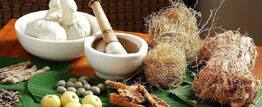Washington: Scientists at the American Chemical Society have made an advance toward overcoming a major barrier to tapping the potential of traditional Chinese medicine (TCM) and India`s ayurvedic medicine in developing new and more effective modern drugs.
Traditional medicines have a track record in benefiting human health that spans thousands of years. However, gaps in knowledge about how these medicines work in the body, their "mode of action" (MOA) - limit their use today.
Information about a drug`s MOA is important for better understanding of both the beneficial effects and side effects of treatments.
Andreas Bender and colleagues from ACS have described an algorithm that can help explain how these substances work in the body, and use of it to help understand the (MOA) of traditional anti-inflammatory medicines.
An algorithm is a step-by-step procedure to generally analyze data, which the scientists applied to predicting how the active chemical ingredients in traditional medicines affect biological processes.
"By establishing the MOA of these compounds, the gap between Western and traditional medicine can be reduced," the report concluded.
They explained how TCM has made key contributions to modern medicine.
In the world`s largest international clinical trial, for instance, scientists concluded that Artesunate, a derivative of the Chinese herb qinghao, should replace quinine as a treatment for severe malaria in both adults and children worldwide.
Their report appeared in ACS` Journal of Chemical Information and Modeling.
ANI
















